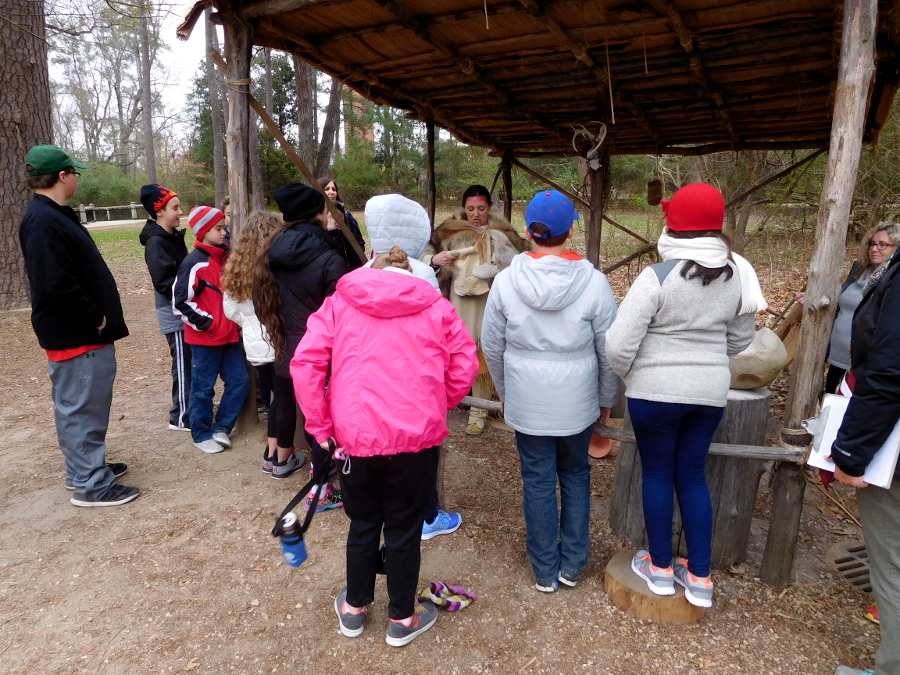
interpreters representing Native Americans within Powhatan's paramount chiefdom interact with visitors at Jamestown Settlement before they reach the recreated fort and replica ships

interpreters representing Native Americans within Powhatan's paramount chiefdom interact with visitors at Jamestown Settlement before they reach the recreated fort and replica ships
There are few sites dedicated to the interpretation of Native America heritage in Virginia, in contrast to the number of historical sites associated with the colonial period, the American Revolution, or the Civil War. By 2008, the Virginia Indian Heritage Trail listed 22 interpretive sites with a focus on Native American heritage, plus five sites managed directly by state-recognized tribes:1
In 2021, the University of Mary Washington began planning a set of signs to spotlight sites associated with the Rappahannock and Patawomeck tribes. With support from tribal leaders, King George County officials supported the initiative, viewing tourism related to Native American heritage as an opportunity for economic development.
Seven interpretive signs were planned for the first Native American heritage trail in Virginia, mimicking the approach used for the Civil War Trail. The Rappahannock and Patawomeck leaders shared their perspective, including a desire to address modern existence of the tribe rather than treat then as long-gone historic relics. A university student working on the project stated:2
In addition, some archeological sites are open to public visits. The Longwood University Archaeological Field School welcomed school children and other visitors to its outdoor laboratory excavating a site occupied on the Staunton River from 1000-1450 CE, now within the Stanton River Battlefield State Park.3
The Native American houses which early colonists encountered were known as yi-hakan.4
Those in the reconstructed Native American town at Jamestown Settlement provides some perspective on how Virginians lived prior to the arrival of the English in 1607. Visitors going to the reconstructed 1607 fort must pass through an area with yi-hakans. Structures are scattered with different orientations as they would have been in Native American towns, not organized in rectangular patterns with straight streets. The houses are small and dark with no windows, helping visitors recognize that people spent most of their time outdoors. One opening in the roof reveals how smoke escaped from the small fire kept burning constantly on the floor.
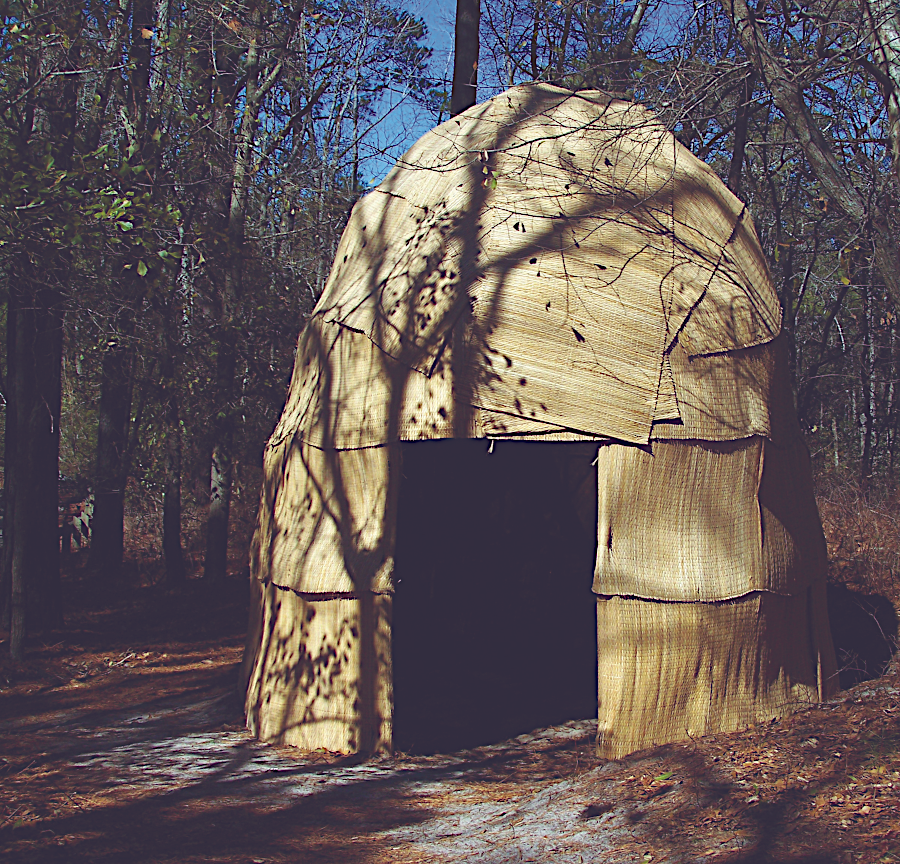
English colonists discovered Native American houses made from local materials, but modern re-creations rely upon easier-to-maintain fiber mats
Source: Encyclopedia Virginia, Powhatan Indian House
The re-creation also includes a part of a palisade, providing a clue that Native American towns required defense perimeters because the different tribes did not always live in peace and harmony.
Other details are incorrect. The yi-hakan have two doors to allow tourists to move through easily, rather than just one, and the material used for walls and roofing is incorrect. For the sake of low cost and easy maintenance, the yi-hakan are covered with mass-produced fiber mats rather than with bark or cattails. It would be difficult to collect cane or cattails from nearby wetlands or bark from trees, in order to build more-authentic structures. Cane is now rare in Virginia wetlands, and few trees are large enough to be stripped for bark suitable for covering a yi-hakan.
In the fiber mat houses, open fires are not kept burning 24 hours/day. That is obviously safer. However, because the mats are not kept dry by constant heat, they will rot faster than would authentic bark or cattails. Yi-hakan built with original materials and with 24-hour fires would require less maintenance than the modern re-creations.
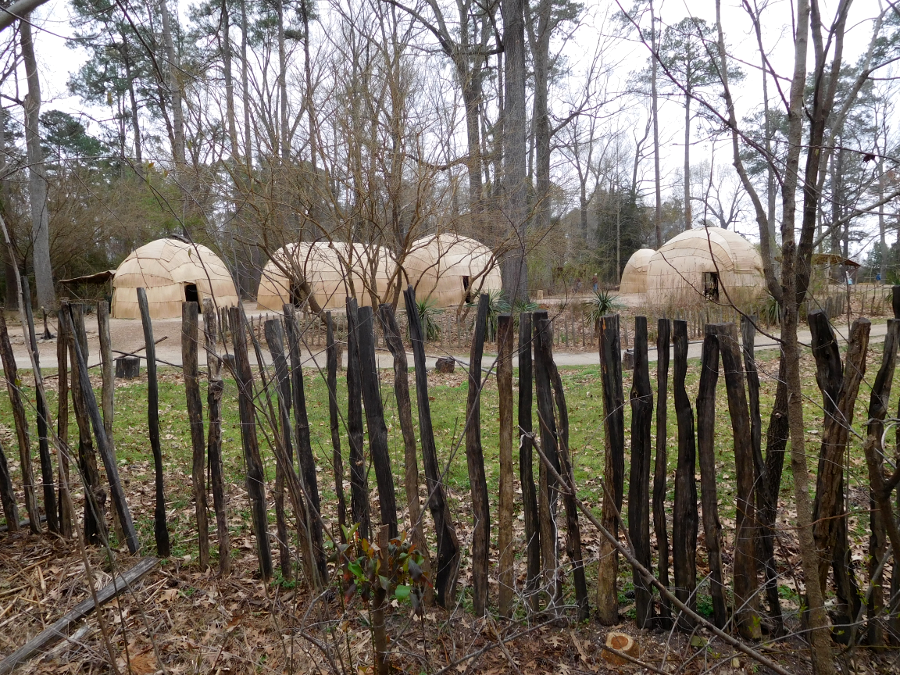
the exhibit of a Native American village at Jamestown Settlement includes a thin representation of a protective palisade
Virginia built a recreation of the English fort for the 350th anniversary in 1957 to draw tourists. Jamestown Festival Park included "Powhatan's Lodge" with members of the Rappahannock tribe interpreting Native American life in 1607.
Jamestown Festival Park was so successful that the state decided to keep the site after the anniversary. In 1989, it was renamed Jamestown Settlement. In preparation for the 400th anniversary, the state invested in a new museum with new exhibits. The new museum reflected much greater sensitivity to cultural diversity, and it finally highlighted the role of Native American and Africans in 1607 in addition to the English colonists.5
The state-recognized tribes in Virginia are all developing and expanding cultural centers. Annual pow-wows and other events expose the general public to Native American culture. Fairfax County Park Authority schedules a Native American weekend regularly at Riverbend Park. The event includes more than the Piscataway and Monacans, who are the closest descendants of the Dogue and Manahoac who probably utilized the park for fishing and hunting into the latter half of the 1600's. Fairfax County invites multiple tribes to connect to a large audience in Northern Virginia through dances, demonstrations and exhibitions.6
Since 2008, there has been a colonial equivalent to The Daughters of the American Revolution. The Continental Society Daughters of Indian Wars will "mark" sites associated with people of that time period, but there is no equivalent group marking sites associated with Native American life.7
The Federal government's American Battlefield Protection Program and the private Civil War Trust have both expanded their mission and now acquire battlefields associated with the American Revolution and the War of 1812. However, there is no equivalent source of funding for protection of sites associated with the Anglo-Powhatan wars, or the 1656 Battle of Bloody Run where Chief Totopotomy was killed while fighting for the colonists.8
Colonial Williamsburg launched its American Indian Initiative in 2002. Full-time interpreters representing Native Americans began walking the Williamsburg streets in 2014. In 2016, the American Indian delegation was created as a specific location for sharing the history of Native Americans.
By 2020, Colonial Williamsburg had six interpreters on staff representing Native Americans, and those interpreters came from both Eastern and Western tribes. In 2022, Colonial Williamsburg created the 13th role of a "nation-builder" who played the role of Oconostota. Portraying the "Great Warrior of Chota" rather than members of tribes who lived near the colonial capital was still historically accurate. During the 1700's, officials in Williamsburg hosted Cherokee delegations at least 17 times, and Oconostota met with Patrick Henry there in 1777.
The goal of creating roles for Native American characters in Colonial Williamsburg was to expand the perspective of visitors coming to see a 1770's town famed for its colonial Virginia history, so people left knowing that:9
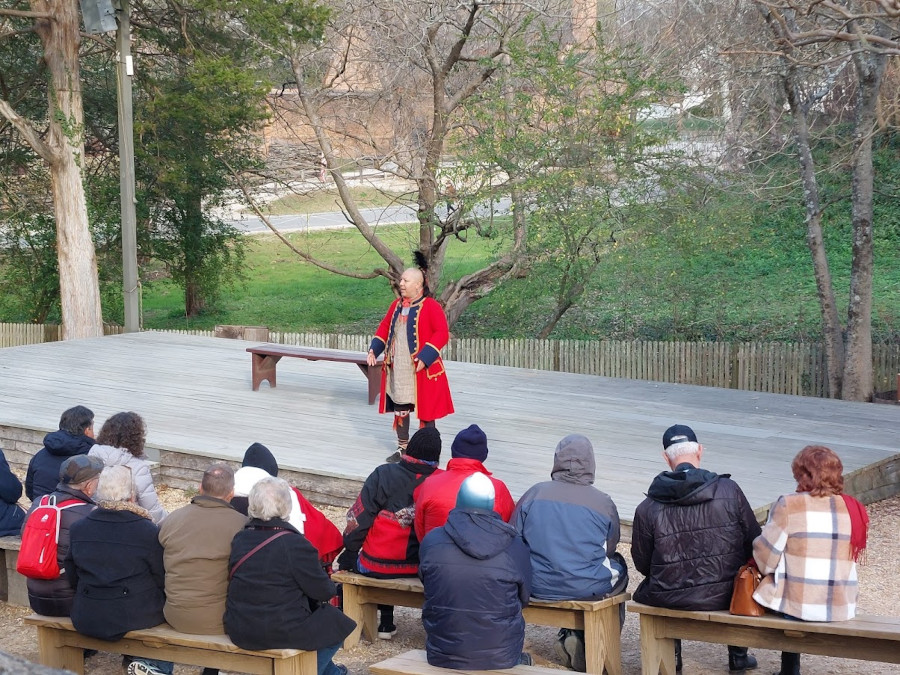
Oconostota portrayal at Colonial Williamsburg
Names of places and products associated with racial stereotypes of Native Americans were modified after the murder of George Floyd in May 2020. Both businesses and government agencies took action.
In 2020, the Secretary of the Department of the Interior issued an order that declared "squaw" to be a derogatory term (referencing prostitute). By 2022, the Federal government renamed over 600 places using "squaw" in the Geographical Names Information Systems. None were in Virginia, but the term continued to be used in Virginia for street names in multiple places.10
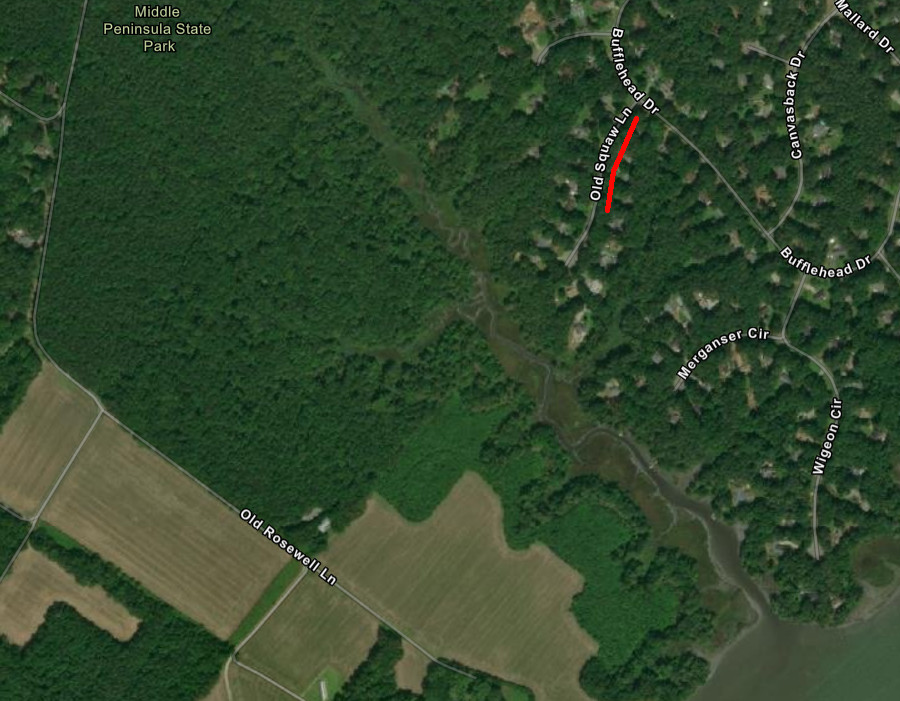
Old Squaw Lane in Gloucester County was next to the historic Rosewell plantation house
Source: ESRI, ArcGIS Online
The Redskins football team renamed itself in July 2020 as the Washington Football Team, before adopting a permanent new name of "Commanders" in February 2022. The Swedish company which sold Red Man chewing tobacco, with its North American headquarters in Richmond, switched the brand name to America's Best in 2022.11
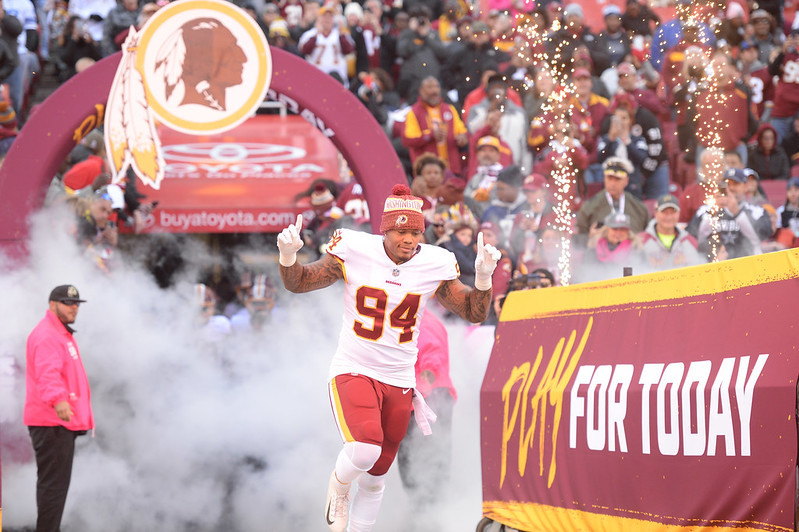
the Washington Redskins footballl team renamed itself in 2020 and dropped the Native American references
Source: All-Pro Reels, Preston Smith (2018)
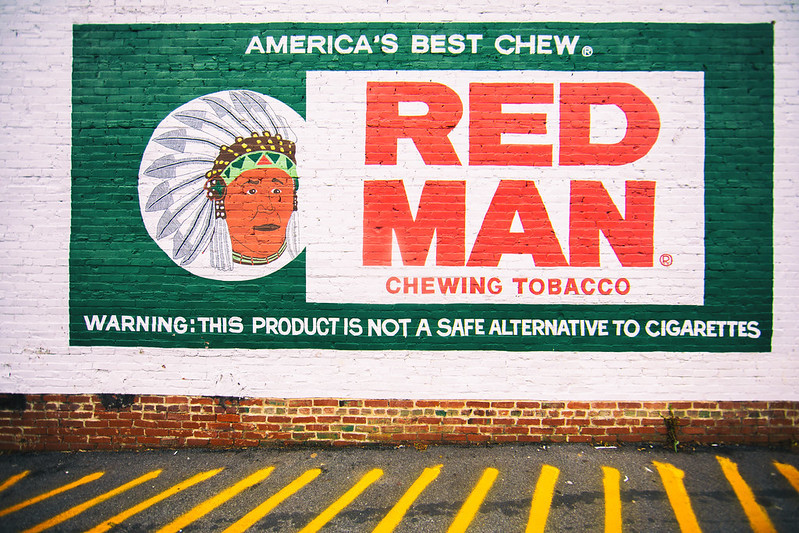
after 2020 in particular, companies began replacing traditional racial stereotypes of Native Americans used in advertising products and services
Source: Thomas Hawk, Red Man (2019)
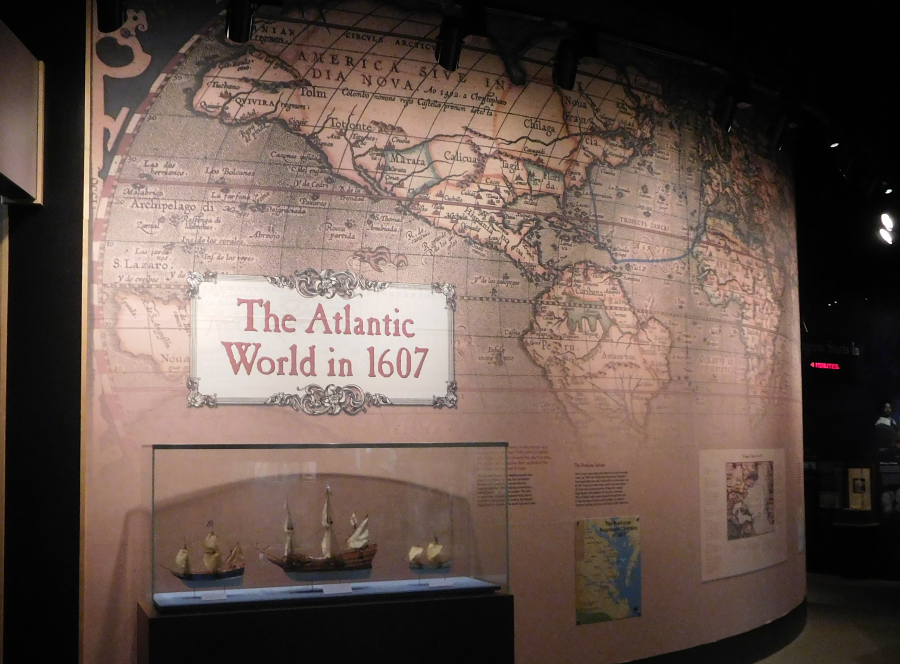
the Historic Jamestowne visitor center built for the 2007 commemoration highlights a broad "Atlantic World" context, with a blending of English, Native American, and African cultures